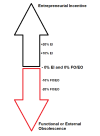how do you estimate the functional superadequacy adjustment if that big boy was sitting in the back yard of a residential property?
How do you estimate the FO when that big boy is sitting in the back yard without the cost even being known? I mean if there is no data to estimate the contribution, then where do you go. I mean you are pointing out "as a residential property" but wouldn't being in the country vs in town make a difference too? Doesn't your judgment count? Why not use another FO item you do have data for as a proxy. But when was the last such item you saw? 5 years ago? 15? 20?
A few years ago, I appraised a 4,000 SF house with indoor pool and 5 air-conditioned shop buildings on 5 acres 5 miles out of town. The guy restored antique and muscle cars. Guess what? A year later it sold for almost exactly what I appraised it for. I estimated 6-12 months marketing time. Did I have comps with 5 shop buildings? Did I have even one air-conditioned shop on a residential property? Am I the world's best appraiser? No. Was I just lucky my Ouija board worked out? Or did I use a dart board? Neither. Did I cost out these buildings and deduct for physical obsolescence? Yes. Then I looked at them and the obvious over-improvements. What percent was I going to apply? With those base costs, I made a subjective estimate based upon long gone sales where I knew the obsolescences were approaching 50% or even more. And i applied those as a proxy for the subject.
And I did that in both the CA and the SCA. And I weighed my estimate of FO on the high side because there were simply way too many buildings. If only one building, I probably would have applied much lower FO. But again, what applied to the SCA applied in the CA. How could it not? Did I have other sales that were suffering from FO? Sure. But was it air-conditioned outbuildings? No. In one case, it was a horse barn, a corral, outdoor fireplace and built in BBQ under a canopy. And the sale was 60 miles away. Another had a huge barn. Another was a lake property with an ADU, enclosed pool as a separate building on a lake lot. I had to estimate the RCN, the land value, makes physical depreciation estimate, and then analyze the difference between the sales price and the projected costs of the component items. The difference was the FO in my opinion. And so going back thru my comps from 10-20 years ago (and yes, I have them) I looked at other sales to predict a % of FO.
Ultimately
it is a judgment call for the appraiser to make and you make that call by reverse engineering the CA on the comps and keeping that in mind for the lifetime of your career. The sales found that demonstrate a lot of FO might be on a small house unlike the house you are appraising, but its likely to be one of the best indicators of FO in a paucity of such sales. And again, it applies to both the SCA and the CA.

